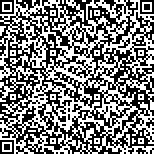| 引用本文: | 倪凌峰,王亚宜.基于群体感应猝灭理论的MBR膜污染控制技术研究进展[J].哈尔滨工业大学学报,2019,51(8):191.DOI:10.11918/j.issn.0367-6234.201811067 |
| NI Lingfeng,WANG Yayi.Advances in MBR biofouling control based on quorum sensing and quenching[J].Journal of Harbin Institute of Technology,2019,51(8):191.DOI:10.11918/j.issn.0367-6234.201811067 |
|
| 摘要: |
| 膜生物污染是由细菌附着在膜材料表面形成生物膜,造成膜孔阻塞、膜通量下降的现象,膜生物污染问题大幅增加了膜生物反应器(MBR)在运行和维护过程的额外能源消耗和运行成本,是限制膜生物反应器高效及稳定运行的主要瓶颈.近年来提出的基于群体感应(quorum sensing,QS)理论的群体猝灭(quorum quenching,QQ)技术是一种新兴且有效的生物膜抑制技术,在膜污染控制领域备受关注.QQ 技术可通过干扰细菌的群体感应系统来阻止其所依赖的信号分子的基因表达,从而有效抑制细菌胞外聚合物(EPS)的分泌,并最终减少膜材料表面生物膜的形成.本文首先介绍了QS理论和QQ技术的原理、QS理论在生物膜形成与分解中的作用及实现QQ技术的3种途径;从外加群体猝灭剂(化合物、酶、细菌等)角度,介绍了基于QQ技术的膜污染控制方法;并根据近年来国内外的最新研究进展,归纳总结了QQ膜污染控制中的猝灭剂固定化技术及其在MBR反应器中的应用;最后对QQ膜污染控制技术的未来研究进行了展望. |
| 关键词: 群体感应 群体猝灭 膜生物反应器 膜污染 生物污染控制 |
| DOI:10.11918/j.issn.0367-6234.201811067 |
| 分类号:X703.1 |
| 文献标识码:A |
| 基金项目:国家自然科学基金(优秀青年基金)(51522809) |
|
| Advances in MBR biofouling control based on quorum sensing and quenching |
|
NI Lingfeng,WANG Yayi
|
|
(State Key Laboratory of Pollution Control and Resources Reuse, College of Environmental Science and Engineering,Tongji University, Shanghai 200092, China)
|
| Abstract: |
| Membrane biofouling is a phenomenon where bacteria adhere to the surface of membrane material and form biofilm, resulting in the block of membrane holes and decrease in membrane flux. The problem of membrane biofouling largely increases the extra energy consumption and operating cost in the operation and maintenance process of membrane bioreactor (MBR), which has become the main bottleneck that limits the efficient and stable operation of MBR. The quorum quenching (QQ) technology based on the quorum sensing (QS) theory is an emerging and effective method for biofilm inhibition, which has achieved much attention in the field of membrane fouling control. The QQ technology can hinder the genetic expression of signal molecules by disturbing the quorum sensing system of bacteria, which effectively restrains the extracellular polymeric substance (EPS) secretion of bacteria and ultimately decreases the biofilm formation on the membrane material. This review introduces the QS and QQ theory, function of the QS theory in the formation and disintegration of biofilm, and three approaches to realize QQ technology. The membrane fouling control methods based on QQ technology are introduced from the perspective of QQ reagents (compounds, enzyme, and bacteria) additions. Furthermore, the immobilization technologies of QQ reagents in QQ membrane fouling control and their potential applications in MBR are summarized according to the latest research progress at home and abroad. Finally, an outlook of future research in QQ membrane fouling control technology is proposed. |
| Key words: quorum sensing quorum quenching membrane bioreactor membrane fouling biofouling control |







